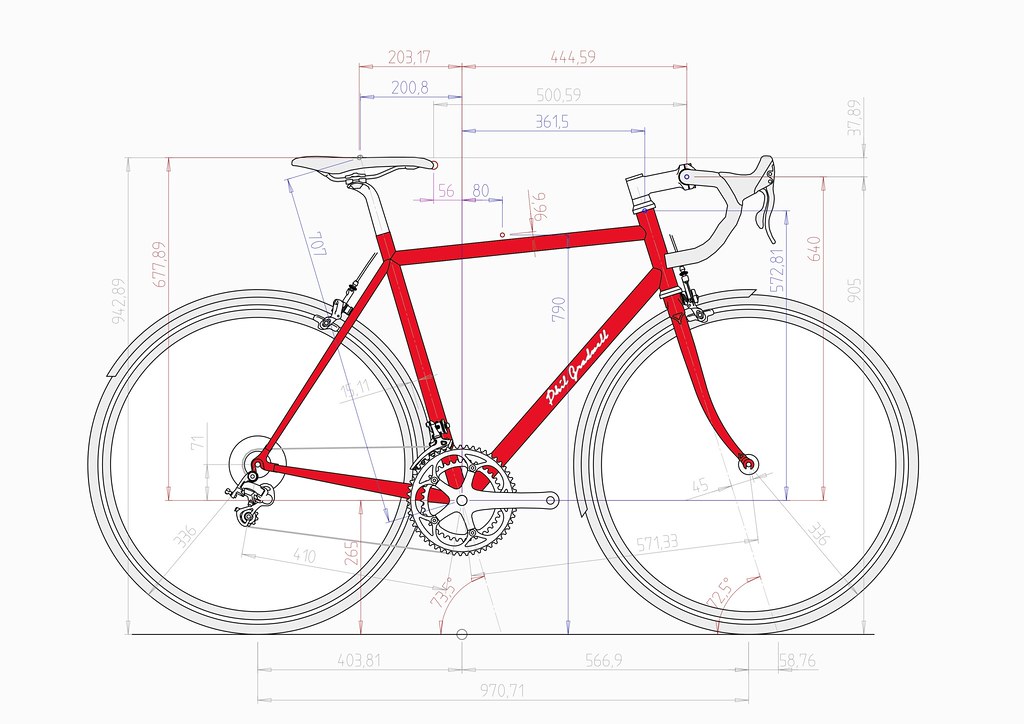
Have you ever wondered how to determine the right bike frame size for you? It’s not just about comfort and aesthetics; the correct frame size is crucial for optimal performance and preventing potential injuries. By understanding the key factors that come into play, you can ensure that your bike fits you perfectly, allowing for a smooth and enjoyable ride.
When determining bike frame size, several factors need to be considered. First, you need to measure your inseam, which is the distance from the top of your inner thigh to the floor. This measurement will serve as a starting point for finding the frame size that suits you best. Additionally, taking into account your height, riding style, and intended use of the bike will influence whether you should go for a larger or smaller frame size. By carefully considering these factors, you can find the ideal bike frame size that ensures comfort, efficiency, and enhances your overall biking experience.
When determining the right bike frame size, follow these steps for a proper fit:

Choosing the correct bike frame size is crucial for a comfortable and efficient cycling experience. A bike that is too big or too small can lead to discomfort, poor control, and even injuries. To determine the right frame size, you need to consider various factors such as your height, inseam length, riding style, and personal preferences. This article will guide you through the process of determining the perfect bike frame size for your needs.
The first step in finding the right bike frame size is to measure your height and inseam length. Height is typically measured from the top of your head to the floor. Stand against a wall with your back straight and your feet together. Place a book or ruler between your legs, parallel to the floor, and measure the distance from the top of the book or ruler to the floor. This measurement is your inseam length.
Knowing your height and inseam length is essential because it serves as a starting point for selecting the appropriate bike frame size. While height is the primary factor, inseam length helps determine the ideal standover height, which is the clearance between the top tube of the frame and your crotch when standing over the bike.
Here’s a general guideline for frame size based on height and inseam length:
| Height Range | Inseam Length Range | Frame Size (Road & Mountain Bikes) |
| 4’10” – 5’2″ | 26″ – 28″ | XX-Small |
| 5’2″ – 5’6″ | 27″ – 29″ | X-Small |
| 5’6″ – 5’10” | 28″ – 31″ | Small |
| 5’10” – 6’1″ | 30″ – 33″ | Medium |
| 6’1″ – 6’4″ | 32″ – 35″ | Large |
| 6’4″ and above | 34″ and above | X-Large |
Another important factor to consider when determining your bike frame size is your riding style. Different riding styles require different frame geometries for optimal performance and comfort.
Road bikes: If you prefer speed and efficiency on paved roads, road bikes are designed with a more aggressive riding position. They have a longer top tube, shorter head tube, and a steeper seat tube angle. This design allows for a more aerodynamic posture and efficient pedaling.
Mountain bikes: For off-road adventures, mountain bikes have a more upright riding position. They feature a shorter top tube, taller head tube, and slacker seat tube angle. This design offers better stability, control, and maneuverability on uneven terrains.
Hybrid bikes: If you enjoy a mix of on-road and off-road cycling, hybrid bikes combine the features of road and mountain bikes. They provide a more relaxed riding position than road bikes but are more efficient than mountain bikes on paved surfaces.
Once you have an idea of the frame size that suits your height and riding style, it’s essential to test the fit before making a final decision. Here are some aspects to consider when testing the fit:
If you are unsure about determining the right bike frame size on your own, it’s best to seek the assistance of a professional bike fitter. Professional fitters have the expertise and tools to analyze your body’s biomechanics and recommend the perfect frame size based on your unique measurements and riding goals.
Additionally, a professional bike fit can help fine-tune other fit elements such as saddle position, handlebar reach, and cleat alignment for optimal comfort and performance.
When selecting a bike frame size, it’s also important to consider the material of the frame. Common frame materials include aluminum, carbon fiber, steel, and titanium. Each material has its characteristics and affects the overall ride quality of the bike.
Aluminum: Aluminum frames are lightweight, affordable, and offer excellent stiffness for efficient power transfer. They are commonly used in entry-level to mid-range bikes.
Carbon Fiber: Carbon fiber frames are lightweight, durable, and provide superior vibration damping for a smooth and comfortable ride. They are commonly used in high-end road and mountain bikes.
Steel: Steel frames are known for their durability, strength, and ability to absorb vibrations. They provide a comfortable ride and are often found in touring and retro-style bikes.
Titanium: Titanium frames offer a unique combination of strength, lightness, and durability. They provide a smooth and lively ride quality and are commonly found in high-end custom-built bikes.
While measuring your height, inseam length, and considering your riding style are the primary factors in determining the right bike frame size, there are a few other considerations worth mentioning:
Keep in mind that frame sizing can vary between manufacturers and even between different models from the same manufacturer. It’s always a good idea to consult the manufacturer’s size charts and recommendations for the specific bike model you are interested in.
Personal comfort and flexibility also play a role in the bike frame size selection process. Some riders prefer a more upright position for increased visibility and comfort, while others may prefer a more aggressive and aerodynamic position for better performance. Consider your personal preferences and test different frame sizes to find the most comfortable option for your body and riding style.
Finally, it’s worth noting that certain components of a bike can be adjusted to fine-tune the fit even after selecting the frame size. Saddle position, stem length, handlebar width, and crank length are all adjustable elements that can be modified to achieve a better fit.
It’s important to ensure a proper bike fit to enhance your riding experience, prevent discomfort, and reduce the risk of injuries. Investing time in selecting the right bike frame size will lead to a more enjoyable and efficient cycling journey.
Determining the correct bike frame size is crucial for a comfortable and efficient riding experience. Here are some professional tips to help you determine the right frame size:
Stand barefoot against a wall with your feet apart and measure the distance from the floor to your crotch. This measurement is your inseam length and will help determine the frame size.
Consult a bike size chart to find the recommended frame size based on your inseam length. Different brands may have slight variations in their size charts, so it’s essential to refer to the specific brand’s chart.
If possible, visit a bike shop and test ride bicycles with different frame sizes. This will give you a better understanding of what size feels most comfortable and suits your riding style.
The type of cycling you engage in also affects the ideal frame size. For example, a mountain bike may have a slightly smaller frame size compared to a road bike to allow for maneuverability.
By following these professional tips, you can determine the right bike frame size for your needs and enjoy a comfortable and efficient riding experience.
In conclusion, determining the right bike frame size is crucial for a comfortable and safe riding experience. Remember to consider your height, inseam measurement, and the type of bike you will be riding. Measure your inseam from the floor to your pubic bone and use that measurement to find the appropriate frame size using a bike sizing chart or calculator.
When trying out bikes, ensure that you can stand over the top tube with a few inches of clearance. Aim for a frame size that allows you to have a slight bend in your knee when your foot is on the pedal at its lowest point. Finally, consult with a professional bike fitter or visit a local bike shop if you need further assistance in determining the right frame size for you. Happy riding!